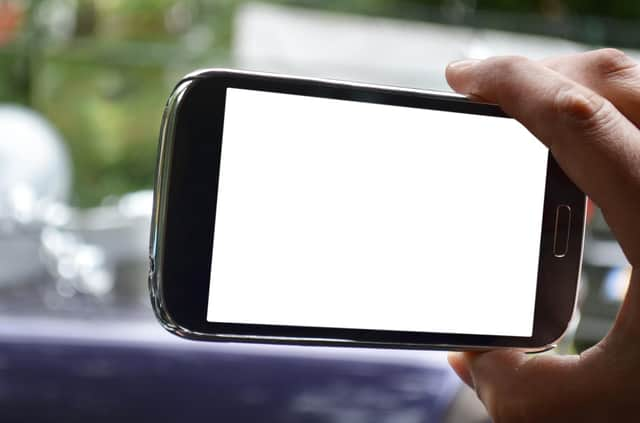Column: Time to put down our smart phones and stop sharing distressing scenes


And then, imagine sharing it on social media for all to see.
I’ll never understand the thought process which runs through people’s heads as their first instinct after a horrifying tragedy is to pick up their smart phone and press record - or even worse, live stream.
Advertisement
Hide AdAdvertisement
Hide AdUnedited, raw, explicit content of people caught in the most harrowing life or death situations, and with no way of consenting to them becoming fodder for a Twitter feed or Facebook post.
Last month, Jake Davison killed five people, and himself ,in Plymouth.
His targets included a young girl who was walking her dog in the street.
It was a deeply distressing scene which unfolded across several streets, sparking grief and fear as police moved quickly to understand, and contain, the scene.
Advertisement
Hide AdAdvertisement
Hide AdMy Twitter timeline was full of reports as snippets of news were posted in real time - some factual, many speculative.
Then, out of nowhere I found myself seeing a re-tweet which clearly showed a woman lying in the street covered by a coat. She had been shot in cold blood.
A “graphic warning” message was flashed across a video link. They might as well have put “watch this!” given that’s exactly how many people would have reacted. We can’t help ourselves.
We live our lives online, and view and record almost everything through our smart phone.
See it, stream it, share it, seems to be the ethos of many.
Advertisement
Hide AdAdvertisement
Hide AdCapturing the drama of a fire or incident is one thing - and yes, we do ask permission from people to use their footage provided it meets the laws and guidelines by which we operate - but pointing your camera at a dead body takes us down to a level that is abhorrent.
It strips the dead of any dignity and respect, leaves their grieving families distressed, and can inflame what is often an uncertain, volatile scene.
And, above all else, it’s simply wrong.
I’ve filmed many emergency scenes, but the thought of pointing a camera at someone who has been shot or attacked is the other side of a red line that is wider than the Forth.
And, on many occasions, I’ve simply turned my camera off because it is inappropriate.
Advertisement
Hide AdAdvertisement
Hide AdSmart phones have captured some astonishing footage that may well have gone un-recorded, and social media has been the perfect platform to show them to a huge, global audience.
But it’s a double-edged sword, as the Plymouth shootings so graphically showed.
Couple of years ago I was walking past the Scott Monument in Edinburgh. It was sealed off as police tried to coax someone back from a ledge hundreds of feet up.
A crowd stopped and watched. A few took out their cameras and were immediately berated by people standing next to them.
As the police got the girl to safety, applause broke out.
Thankfully no-one filmed it live on social media
Advertisement
Hide AdAdvertisement
Hide AdIt’s human nature to pause to see what is going on around us, but we can see it with our own eyes.We don’t need to watch it through the lens of a Galaxy S40 and stream it to anyone else.
